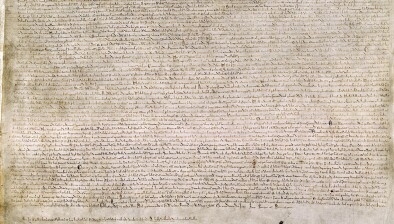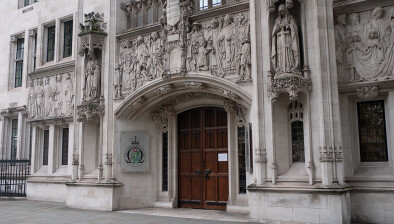Court of Appeal: Man convicted of raping his 14-year-old niece loses appeal against conviction
A man who was convicted of raping his 14-year-old niece when they were living in the same house in 2012 and 2013 has lost an appeal against his conviction.

About this case:
- Citation:[2019] IECA 194
- Judgment:
- Court:Court of Appeal
- Judge:Mr Justice George Birmingham
Finding that the man’s complaints regarding the trial judge’s charge and directions to the jury were not based in reality, Mr Justice George Birmingham, president of the Court of Appeal, also said the indication from the complainant regarding her discomfort in intimate situations since being raped did not warrant an unlimited trawl through her sexual history at trial.
Background
In the Central Criminal Court in June 2017, DMcD was convicted of two counts of rape and sentenced to nine years’ imprisonment with the final year suspended. The complainant was DMcD’s niece, who was 14 years old when she was raped on two occasions between February 2012 and April 2013.
The first incident happened in circumstances where the complainant fell asleep while watching TV with DMcD and awoke to him pulling at her clothes. Her evidence was that DMcD then followed her up to the room she was staying and raped her. While she could not clearly see DMcD’s face in the bedroom, he was the only adult male occupant of the house, and she gave evidence that she could smell smoke, stale alcohol, and oil – referring to the fact that DMcD was a mechanic. The second incident happened about three or four months earlier. The complainant gave evidence that she woke up in pain and DMcD was on top of her. She gave evidence that she could smell DMcD but could not see him as her eyes were stuck together with sleep and mascara.
During the trial, DMcD sought a directed verdict of not guilty. Ruling on the application for a direction relating to the identification evidence, the judge said it was apparent that the complainant had clearly identified DMcD as the person she regarded as the person responsible for the rapes.
Court of Appeal
In the Court of Appeal, DMcD argued that:
- There should have been a directed verdict of not guilty because there was no sufficient evidence of identification;
- The judge’s charge on the identification issue was inadequate;
- There should have been a directed verdict of not guilty by reference to the second limb of R v Galbraith [1981] 1 WLR 1039 because of the extent of the inconsistencies in the case and the fact that the evidence was inconsequential, weak, and tenuous;
- The judge erred in failing to contextualise a corroboration warning;
- The judge misdirected the jury in relation to the burden of proof and the nature of reasonable doubt;
- DMcD was improperly restricted in cross-examination and calling evidence touching on the complainant’s prior sexual history.
Mr Justice Birmingham said the arguments in relation to identification were not grounded in reality – there was no room for argument or dispute but that the complainant was saying clearly and unequivocally that she was raped by her uncle, DMcD.
Mr Justice Birmingham said that the application for a direction had to be considered against the evidence, and that a properly directed jury could, if satisfied that the complainant had been raped twice, be satisfied beyond reasonable doubt that the rapist was the only adult male occupant of the house.
If satisfied about the first incident, “then any suggestion that the second rape was committed by somebody else, unknown, who gained entry to the house and who shared so many features in common with the accused that he could be mistaken for him, was so extraordinarily unlikely that it was likely to be quickly rejected”.
Considering the defence’s case that the allegations were false, Mr Justice Birmingham noted that if the allegations were made up, it was hard to see the purpose of introducing any element or difficulty in relation to identification/recognition into the narrative.
Mr Justice Birmingham also rejected DMcD’s complaint as to the judge’s charge to the jury, finding that what the judge had to say was more than ample. He also rejected that the direction should have been given considering Galbraith, stating that there was absolutely no doubt the application was properly rejected – indeed the trial judge had referred to Galbraith and said it was “not authority for the proposition that a case must be withdrawn if the prosecution’s evidence contains weaknesses or vagueness or sometimes significant inconsistencies”.
Considering the corroboration warning given by the trial judge, Mr Justice Birmingham said the charge in relation to corroboration was, adequately contextualised and the warning was more than adequate.
Mr Justice Birmingham considered the trial judge’s directions on the standard proof and reasonable doubt at length, during which the trial judge said “there are many things that in life, if one took the possibility of disaster into account, one might not do and one might not engage in…One might not, if one were a surgeon, engage in a difficult piece of surgery because we might make a mistake. That is not the standard of proof in this case. The standard of proof is … whether the evidence put forward establishes the case to a level of proof beyond a reasonable doubt”.
Mr Justice Birmingham said this reference to the surgeon was unfortunate, but that it was not realistic to focus on one phrase from a lengthy charge – and that the charge considered as a whole was not unfavourable to the defence.
Finally, Mr Justice Birmingham said the trial judge’s approach to cross-examination in regards to the complainant’s sexual history was “not only a considered and careful one, but a very proper one”. He said it was a “contrived and artificial” suggestion “that because the complainant indicated a degree of discomfort in situations of intimacy that this should open up the possibility of a wide-ranging, if not unlimited trawl”.
Rejecting all grounds of appeal, Mr Justice Birmingham dismissed the appeal.
- by Seosamh Gráinséir for Irish Legal News









